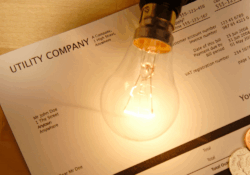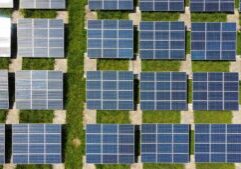Insulation has played a pivotal role in construction for millennia. Today, it stands at the forefront of green construction, offering a path to significant energy savings and helping buildings meet Environmental, Social, and Governance (ESG) objectives. This blog delves into insulation’s evolution and its modern applications, emphasizing how it aligns with sustainability goals.
A Journey Through Time: The Evolution of Insulation

Straw being used as insulation, image from Troy Historic Village
Straw as an Early Insulator – A Glimpse from Troy Historic Village
The quest for comfortable indoor climates is as old as civilization itself. Historically, materials like straw served as primitive insulators, catering to the nomadic lifestyle with their easy availability. David Bozsaky notes the transition from these organic solutions to more durable, processed materials in the 19th century. This era introduced us to insulation panels, laying the groundwork for familiar modern materials such as rockwool and fiberglass. Fast forward to the 21st century: artificial materials dominate, with plastic foam and mineral wool leading the charge in insulation technology.
Modern Insulation: Types, Ratings, and Applications

Image from The Home Depot
Insulation today has multiple applications, and depending on the building type and climate, the types of insulation used will vary. Different climates will require different R-values, a measurement used to indicate how well insulation can prevent heat from leaving and entering a building. Insulation is rated by its R-value, and the higher the R-value, the better the energy efficiency and climate control for the building. R-values for different climates around the United States can be seen in the graphic above. To learn more about the different types of insulation and R-values, take a look at The Home Depot’s video.
The Role of Insulation in High-Performance Buildings
Insulation is one of the most important aspects of high-efficiency buildings and construction. It prevents the overuse of Heating, Ventilation, and Air Conditioning (HVAC), which means a reduction in energy usage for the building which directly impacts LEED and other building certification scoring.
The material provides 10-50% energy savings, depending on the building’s type and location, according to Utilities One. Reducing heat loss from the building not only reduces energy bill costs but also leads to increased tenant happiness by reducing noise carrying. High efficiency insulation can also help buildings successfully meet energy benchmarking requirements, which are in effect in over a dozen cities across the United States.
In addition, high efficiency insulation can help properties meet green building certification requirements, such as LEED. Direct benefits to building ownership from green building certifications include reducing building vacancies and increased revenue, as green certified spaces lease rates can be 20% higher compared to non-green spaces, which leads to higher rental prices. The financial benefits of high efficiency insulation are well documented in today’s case study, 435 Indio Way.
Spotlight on Sustainability: A Model of Efficiency

Image from RMW Architects and Interiors
435 Indio Way is an office building located in Sunnyvale, CA, in climate zone 4. The project is 31,750 sq ft, and was retrofitted to be net zero, meaning that the amount of greenhouse gases (GHGs) that the building generates is balanced with the GHGs that are removed from the atmosphere. The building was originally built in 1973. The retrofit was completed in 2013 and the building was occupied in 2014. 435 Indio Way complies with California’s Title 24 Energy Code requirements, which states that all commercial buildings must generate as much energy as they consume over 12 months by 2030.
Insulation and ventilation were important factors in the building’s net zero construction. The building has interior concrete walls and slabs, which function as a heat sink. Insulation was added to the exterior walls to promote temperature regulation. After the retrofit, the walls resulted in an R-value of R-20. Insulated foam was also added to the roof to increase insulation, which resulted in an R-value of R-40.

Image from the New Buildings Institute
Cost Savings Benefits of 435 Indigo Way
The total costs of this project at completion were $5.1 million. A code minimum building would have cost $3.5 million by comparison, meaning this building is 30% higher than a typical structure. However, the benefits of the renovation were fast and apparent. To provide a couple of examples:
- 435 Indio Way leases were filled 15 months faster than the typical market average, meaning the owners received 15 months of rent payments in this time when typically these spaces would be empty.
- Typical operating expenses, such as utilities and maintenance, were projected to cost 34% less than a minimum code building, by the design team’s own financial analyses.
Multiple areas of the building had increased financial gains, and all demonstrate this building’s financial benefits post renovation.
The evolution from straw to sophisticated insulating materials underscores humanity’s ingenuity in pursuing comfortable living environments. Today, insulation is more than just a construction material; it’s a strategic asset in the green building movement, offering both environmental and financial benefits. By embracing high-efficiency insulation, property owners can achieve ESG goals, enhance building performance, and secure a competitive edge in the real estate market.
Discover how Conservice will guide you in harnessing your portfolio’s full potential to achieve sustainability and profitability.
Subscribe To Our Blog Newsletter
Keep yourself ahead of the curve with the latest utility news, trends, & resources.
Editor's Picks
What the 2026 GRESB Updates Mean: Our Observations on the Key Shifts
Change is on the horizon. The 2026 GRESB Real Estate Standard marks a decisive move toward measurable, performance-based climate action. Rather than incremental adjustments, these updates focus attention on the issues that most directly shape long-term value and resilience. GRESB…
Read MoreCalifornia AB1414: New Bulk Internet Opt-Out Law—What You Need to Know
New Requirements Go Into Effect January 1, 2026 California has officially passed AB1414, a bill that changes how property owners and operators can offer bulk internet services to residents. Beginning January 1, 2026, property owners must allow residents the ability…
Read MoreBuilt to Go the Distance: How Properties Achieve ENERGY STAR, LEED, and WELL Certifications
We recently held our first 5K for our team, and it got us thinking. We watched many of our Experts who hadn’t run in years (or ever) lace up, train for weeks, and push through on the big day. The…
Read MoreSmart Waste & Water Analytics: The Next Cost-Cutting Frontier in Multifamily
In this economy, cost control is on everyone’s mind. And energy and payroll usually top the list for multifamily operators. But here’s the thing: water and waste are two of the fastest-growing, least-managed costs eating into margins every day. Consider…
Read MoreYour Utilities Might Be Lying to You.
Preventing Losses from Errors, Theft, and Oversight. Utilities don’t always tell the whole truth. At least not without a little verification. Between billing errors, meter issues, and missed rate updates, it’s easy for even the most diligent property teams to…
Read MoreThe First Bills Are In. Here’s What Early Utility Data Reveals About Student Housing
Move-in day has come and gone. The carpets are clean, the furniture is set, and the flood of parents and students with boxes and carts has finally slowed. For operators, the chaos of Turn is behind them. But another wave…
Read MoreMeet the New Goby Dashboard That Turns Sustainability Data Into Action
Conservice is excited to introduce a new dashboard for Goby, our sustainability and compliance platform. Goby has always helped real estate owners and operators manage utility and sustainability data across their portfolios. With this release, the platform now delivers insights faster,…
Read MoreUtility Data Centralization: Unlocking AI, Energy, and Sustainable Solutions
Let me tell you a secret. If you were to take over my computer at any given moment, you’d probably find 30 tabs, 10 apps, and a spreadsheet all open at once. I’ll admit it: I’m no expert at centralizing…
Read MoreThe Hidden Engine Driving Build-to-Rent in 2025
When the Smiths moved into a brand‑new rental home last spring, they didn’t just discover fresh flooring or smart thermostats; they stepped into a lifestyle shaped by seamless utility management. They never saw a bill go astray, never gawked at…
Read MoreENERGY STAR Portfolio Manager: What’s Really Happening and How to Protect Your Data
If you work in property management or sustainability, you’ve probably heard the headlines. Back in May, several news outlets reported that the federal ENERGY STAR program (including ENERGY STAR Portfolio Manager) could be eliminated. The reality in August 2025 looks…
Read MoreExperience Effortless Utility Management and Cost Savings
Connect with us today to discover how our solutions can ease tenant billback, streamline utility management, and reduce your costs and energy usage. Make your utility management smarter and more efficient with Conservice!













